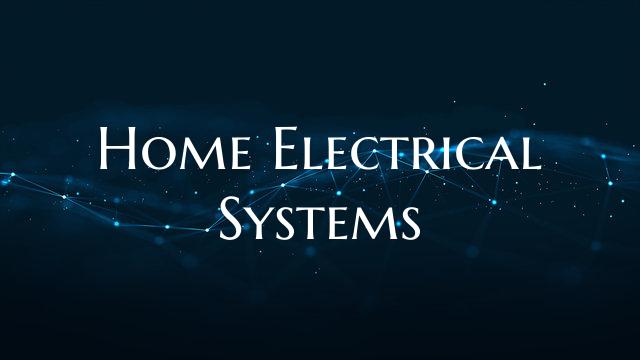Home Electrical Systems
Introduction: Home electrical systems play a crucial role in our daily lives by providing power for lighting, heating, cooling, appliances, and electronics. Understanding how these systems work is essential for safety, efficiency, and functionality within our homes. In this guide, we will discuss the components of home electrical systems, common issues, safety tips, and maintenance practices to help you better manage and care for your home's electrical infrastructure.
Components of Home Electrical Systems: 1. Electrical Panels: The heart of the home electrical system, the electrical panel distributes electricity to different circuits throughout the house. It houses circuit breakers or fuses that help prevent overloading and electrical fires. 2. Wiring: Electrical wiring consists of conductors that carry electricity from the panel to outlets, switches, and appliances. Different types of wiring, such as copper and aluminum, are used based on electrical requirements. 3. Outlets and Switches: Outlets provide access to electricity for plugging in devices, while switches control the flow of electricity to lights and other fixtures. 4. Light Fixtures and Appliances: These are the end points of the electrical system where electricity is utilized for lighting, heating, cooling, and powering various household appliances.
Common Issues with Home Electrical Systems: 1. Tripped Circuit Breakers: Overloaded circuits can cause circuit breakers to trip, cutting off electricity to certain areas. This is a safety mechanism to prevent overheating and fires. 2. Flickering Lights: Flickering lights can indicate loose connections, faulty wiring, or overloaded circuits, which should be addressed promptly to avoid damage. 3. Electrical Surges: Sudden spikes in electrical voltage can damage appliances and electronics. Surge protectors can help safeguard against these fluctuations. 4. Outdated Wiring: Homes with outdated or degraded wiring may be at risk of electrical fires and malfunctions. Upgrading wiring to meet current safety standards is important for home safety.
Safety Tips for Home Electrical Systems: 1. Avoid overloading outlets with too many devices. 2. Use surge protectors for sensitive electronics. 3. Regularly inspect and replace damaged or frayed cords. 4. Hire a licensed electrician for any major electrical work or repairs.
Maintenance Practices: 1. Schedule regular inspections of your home's electrical system by a professional electrician. 2. Test smoke detectors and carbon monoxide detectors regularly to ensure they are functioning properly. 3. Replace outdated electrical components like outlets, switches, and wiring as needed.
Conclusion: Understanding your home electrical system and practicing proper maintenance and safety measures can ensure a safe and functional living environment. By being aware of common issues, safety tips, and maintenance practices, you can protect your home and family from electrical hazards and enjoy the benefits of a reliable electrical system. Regular inspections and upgrades as necessary will help you maintain the efficiency and longevity of your home's electrical infrastructure.

